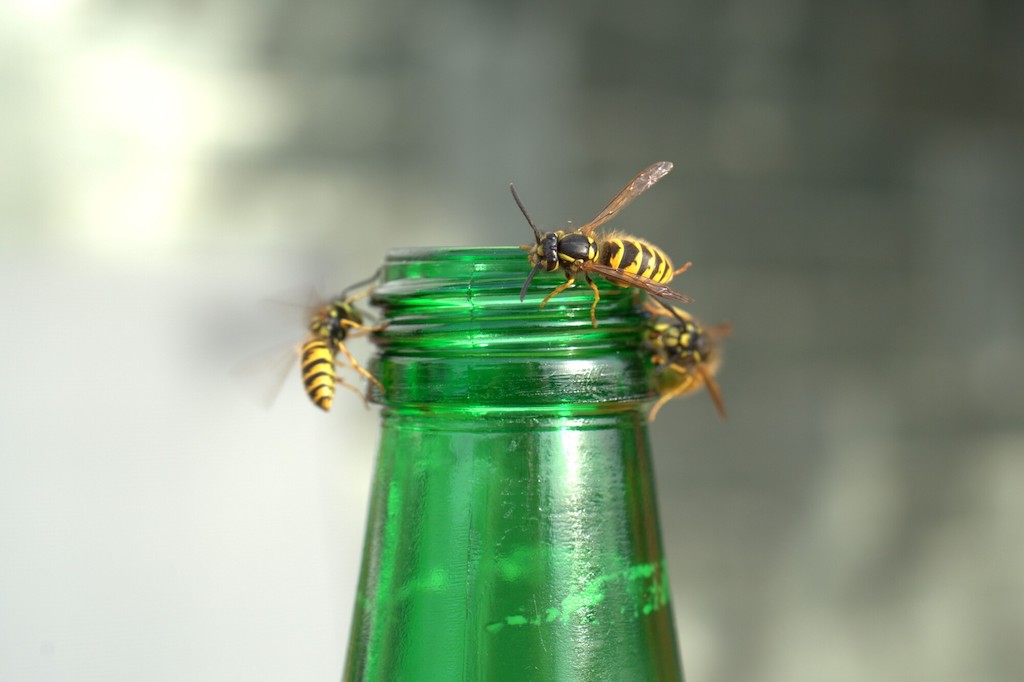
Stinging insects can pose a huge problem if they decide to nest up in your home. Although serious allergic reactions to insect bites and stings only account for 90-100 deaths per year, they’re still not a welcome part of anyone’s daily routine.
If stinging insects have taken up residence in your home, then look no further. Let’s take a closer look at how to get rid of them once and for all.
What Brings Stinging Insects to Your Home?
Most stinging insects such as wasps are drawn to your home by overhangs. Now, there’s not a lot you can do about the design of your house, but it’s important to understand that insects such as wasps are most likely to build their nest near a food source. This means that a large amount of bugs in your yard and around your home is likely to attract wasps and other stinging insects.
The paper wasp uses old and weathered wood to build its nest. It will build its nest close to a source of building materials. Wasps are most likely to build their nests in places with exterior access, so be sure to check around all the beams and supports as well along the mortar between brickwork.
How to Keep Stinging Insects Away From Your Home
To keep stinging insects away from your home, you need to make it less appealing to them. Let’s take a look at 4 simple steps to keep them away.
1. Maintain Your Home
Any damaged areas can prove to be ideal nesting spaces for stinging insects. Be sure to repair torn screens, broken panels, holes in soffits, and any crevices around your home. This reduces the places where they can nest and also makes it more difficult for stinging insects to gain entry.
2. Keep up With Yard Work
Several wasps, such as yellow jackets, build their nests in holes in the ground. This could either be easily accessible ground such as sand or in holes that have been previously dug by animals. Be sure to maintain your yard and fill in any holes that you come across.
3. Cover or Remove Sweet Things
If you’ve ever taken cake to a summer picnic, then you’ll know that sugary foods and drinks attract wasps. Be sure to cover or remove sweet things from around the home. Many stinging insects can also be attracted to pet food, so be sure not to leave it lying around on your porch.
4. Plant Flowers Away From Your Home
Flowers satisfy the sweet tooth of stinging insects, so be sure to plant them a fair distance away from your home. Wasps and hornets also prey on other insects that might be drawn to your garden.
How to Get Rid of Stinging Insects in the Home
If you already have wasps in the home, then there are a few steps you can take before calling upon the exterminator. You can purchase wasp traps that are designed to draw wasps away from their nest.
If you need to remove a nest, then proceed with caution! You can suit up by making sure you’re completely covered and spray the nest with wasp killer during the coolest part of the day. Wait for 1-3 days to ensure that wasps entering the nest come in contact with the poison.
Once you’re ready to get rid of the nest, approach carefully, and surround the nest in a plastic bag. Carefully detach the nest from whatever it’s attached to and seal the plastic bag. Discard the bagged nest in a sealed rubbish bin outside your home.
Say Goodbye to Stinging Insects in Your Home
Following the steps in this article can help to prevent and remove stinging insects from your home. Before you approach a nest, always be sure to note a point of exit should you need to leave quickly. If in any doubt, it’s best to contact your nearest exterminator.
If you found this article useful, be sure to check out the rest of our site for more home-keeping and lifestyle tips and tricks.
Related posts
More Reads
Staying Cool: Innovative Tips for Efficient Air Conditioning
Energy-Efficient Practices Air conditioning is more than a luxury; it’s a staple in many modern homes. However, it’s essential to…
Rethinking Junk Disposal: Creative Strategies for Improved Efficiency
The Importance of Proper Junk Disposal Responsibly disposing of junk is essential for protecting the environment and ensuring community health….


